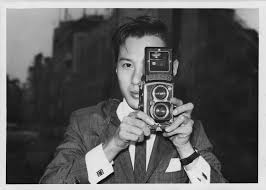Piet Mondrian is a name synonymous with pure abstraction and geometric harmony. Best known for his grid-based compositions featuring bold black lines and primary colors, Mondrian’s art embodies a quest for universal beauty and balance. His work laid the foundation for countless design disciplines, from modernist architecture to minimalist fashion and graphic design. But behind the strict geometry lies a deeply spiritual and philosophical artist whose journey from naturalism to abstraction tells a story of intellectual rigor and visionary transformation.
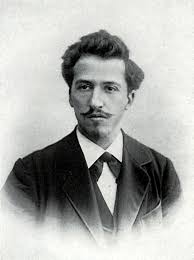
A Life in Search of Harmony: Piet Mondrian’s Biography
Early Life and Training (1872–1908)
Pieter Cornelis Mondrian was born on March 7, 1872, in Amersfoort, the Netherlands. His father was a schoolteacher and amateur artist, and young Piet received early artistic encouragement. He trained as a teacher but soon pursued art seriously, studying at the Rijksakademie van Beeldende Kunsten in Amsterdam. His early work included landscapes and still lifes painted in the tradition of Dutch realism, influenced by the Hague School and Symbolism.
Spiritual Evolution and Artistic Breakthrough (1908–1914)
In the early 20th century, Mondrian encountered the ideas of Theosophy—a spiritual philosophy that deeply impacted his artistic vision. He believed art should express universal truths beyond the visible world. This conviction, combined with exposure to Cubism during his time in Paris (1911–1914), led to the dissolution of realistic representation in his work. His paintings became increasingly abstract, breaking forms into fragmented planes and experimenting with a limited color palette.
The Birth of Neo-Plasticism and De Stijl (1917–1925)
Back in the Netherlands during World War I, Mondrian co-founded the De Stijl movement with fellow artist Theo van Doesburg. De Stijl, or “The Style,” proposed a new artistic language rooted in abstraction, geometry, and universal harmony. Mondrian called his personal style “Neo-Plasticism” (Nieuwe Beelding), based on the reduction of visual elements to vertical and horizontal lines and the primary colors red, blue, and yellow, along with black, white, and gray.
He laid out the theoretical foundation in his essay “Neo-Plasticism in Pictorial Art”, emphasizing balance and asymmetry as a path to spiritual order. His artworks of this period became precise, methodical compositions that transcended individual expression to strive for cosmic unity.
Paris, London, and New York (1925–1944)
Mondrian returned to Paris in 1919 and stayed for almost two decades, refining his aesthetic. With the outbreak of World War II, he fled to London and later to New York in 1940. In the bustling dynamism of New York, his style evolved once more. His final works shimmer with energy and rhythm, echoing the pulse of jazz music and the vibrant cityscape around him.
Mondrian died in New York on February 1, 1944, at the age of 71, leaving behind a legacy that reshaped the trajectory of modern art.
⸻
Iconic Artworks by Piet Mondrian
1. “Composition with Red, Blue and Yellow” (1930)
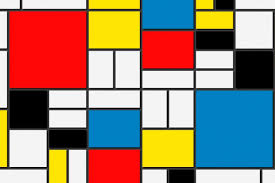
This painting epitomizes Mondrian’s Neo-Plasticist style: a stark white canvas crisscrossed by thick black lines forming rectangular shapes, some filled with bold red, yellow, or blue. Its asymmetrical balance and rhythmic spacing create a meditative harmony, representing Mondrian’s ideal of spiritual order.
2. “Broadway Boogie Woogie” (1942–43)
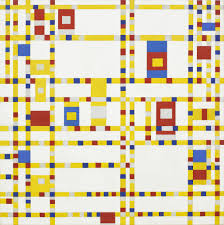
Mondrian’s final masterpiece, painted in New York, is a celebration of the city’s energy and the syncopated rhythms of jazz. Abandoning thick black lines, he created a mosaic of yellow blocks and colored squares that seem to dance across the canvas. It’s a joyful, dynamic departure from the more rigid earlier grids.
3. “Tableau I” (1921)
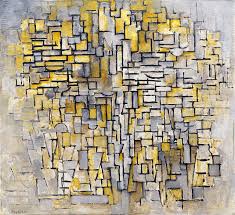
One of his most influential early Neo-Plasticist works, Tableau Ishowcases Mondrian’s minimalist philosophy in its infancy. It emphasizes simplicity and equilibrium with its carefully arranged grid and selective use of color. The mathematical precision foreshadows the principles that would dominate his mature work.
4. “Victory Boogie Woogie” (unfinished, 1942–44)
Mondrian was working on this painting at the time of his death. Unlike his earlier austere works, this painting bursts with motion and vitality. The artist applied colored tape instead of paint in some sections, showcasing his experimental nature and willingness to embrace spontaneity.
⸻
Legacy and Influence
Piet Mondrian’s work transcends fine art. His vision of pure abstraction influenced architecture, interior design, fashion (famously by Yves Saint Laurent), and graphic design. The principles of De Stijl can be seen in everything from Bauhaus architecture to minimalist digital interfaces.
He is often cited as a father of geometric abstraction, a precursor to Minimalism, and a spiritual guide for generations of artists seeking order in an increasingly chaotic world.
⸻
Final Thoughts
Piet Mondrian was more than a painter of squares and lines—he was a seeker of art’s universal truth. Through a journey that took him from the quiet landscapes of the Dutch countryside to the vibrant streets of Manhattan, he crafted a visual language that continues to inspire and challenge. His belief that beauty lies in balance, clarity, and simplicity remains a cornerstone of modern aesthetics.
As he once wrote:
“Art is higher than reality and has no direct relation to reality. To approach the spiritual in art, one will make as little use as possible of reality.”



